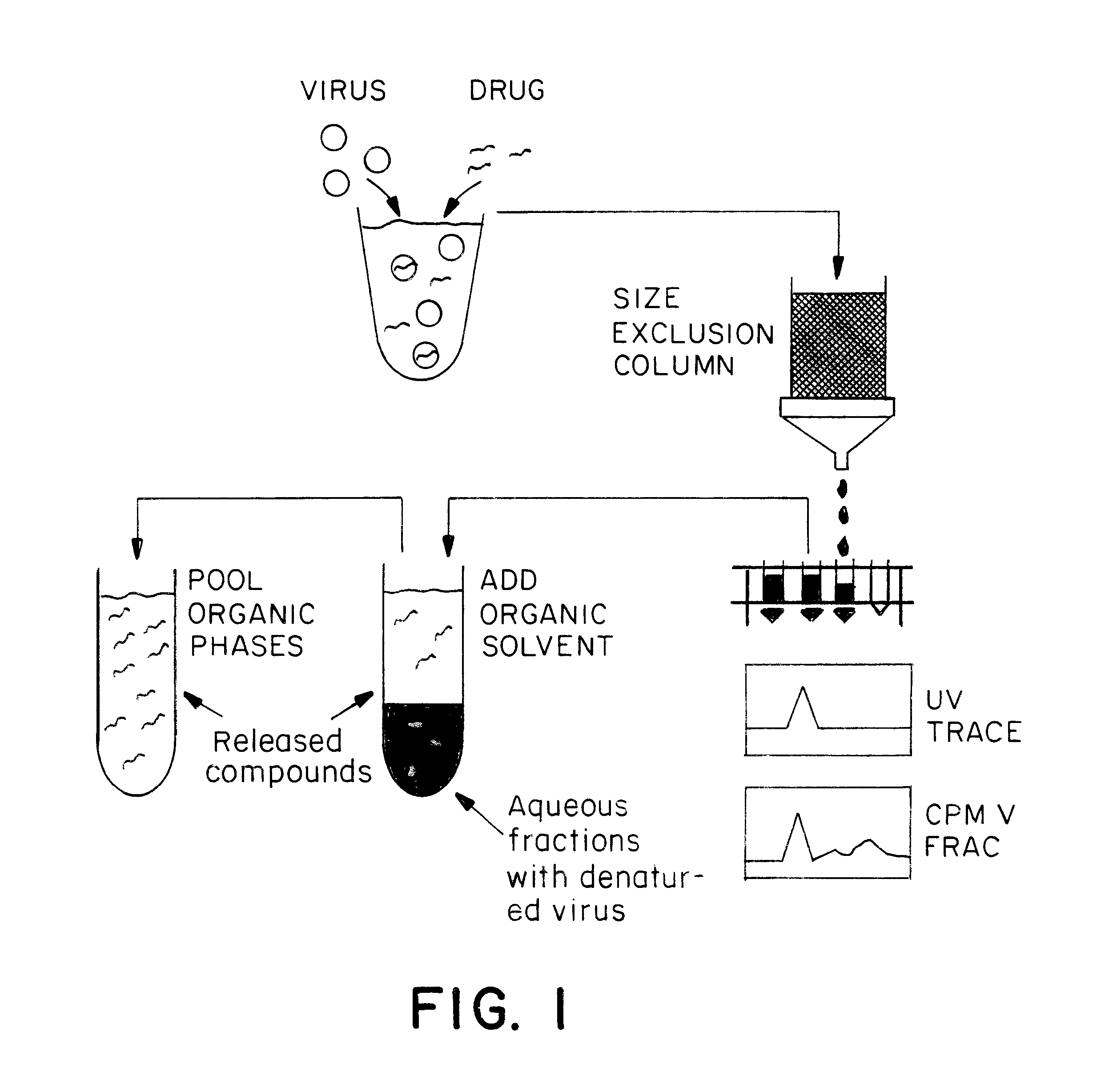Method for identifying new anti-picornaviral compounds
a technology of anti-picornaviral compounds and screening methods, applied in biochemistry apparatus and processes, instruments, material analysis, etc., can solve the problems of insufficient prophylactic effect or conversion of available drugs, high cost and time-consuming screening procedures, etc., and achieve the effect of maximizing the sensitivity or specificity of the assay
- Summary
- Abstract
- Description
- Claims
- Application Information
AI Technical Summary
Benefits of technology
Problems solved by technology
Method used
Image
Examples
example 2
Purification of Virus-Compound Complexes
Virus-drug mixtures are loaded onto a size exclusion column (1.4 cm diameter.times.8.4 cm height) having a Sephacryl S-200 or S-300 matrix (Pharmacia) to separate virus-drug complexes from unbound drug. The running buffer is 5% DMSO in PBS. One mL fractions are collected at 0.5 mL / min. Identification of fractions containing the void volume, and therefore possibly containing viruses bound with compound, is accomplished with a Pharmacia Uvicord SII UV monitor which measures the OD280 of the material as it is pumped out of the column (See FIG. 1 for schematic).
example 3
Extraction and Concentration of Virus-Bound Drug
Fractions containing virus bound with compounds are mixed with a double volume of ethyl acetate, vortexed for 30 seconds, then centrifuged for 10 minutes at 12,000.times.g. At this point the viruses will be completely denatured. Previously virus-bound drug is released, and will partition into the ethyl acetate phase. The upper organic phase is separated from the aqueous phases. The organic phase containing the compounds is dried in a centrivap (See FIG. 1 for schematic).
example 4
Preparation of Sample for MS
A small volume (50 .mu.L) of an organic solvent is added to the tube containing the dried sample. Which solvent should be used depends upon the MS technique used for the analysis. For MALDI-TOF MS, the solvent is acetonitrile or THF. In the case of electro-spray MS, it is ethanol. After the addition of solvent, the tube containing the sample is vortexed. At this point, the concentration of each virus-bound compound is at least 2 .mu.M, high enough for detection by electro-spray MS or MALDI-TOF MS. The decision between electro-spray or MALDI-TOF depends upon the material in the sample.
PUM
| Property | Measurement | Unit |
|---|---|---|
| temperature | aaaaa | aaaaa |
| volumes | aaaaa | aaaaa |
| diameter | aaaaa | aaaaa |
Abstract
Description
Claims
Application Information
 Login to View More
Login to View More - R&D
- Intellectual Property
- Life Sciences
- Materials
- Tech Scout
- Unparalleled Data Quality
- Higher Quality Content
- 60% Fewer Hallucinations
Browse by: Latest US Patents, China's latest patents, Technical Efficacy Thesaurus, Application Domain, Technology Topic, Popular Technical Reports.
© 2025 PatSnap. All rights reserved.Legal|Privacy policy|Modern Slavery Act Transparency Statement|Sitemap|About US| Contact US: help@patsnap.com



